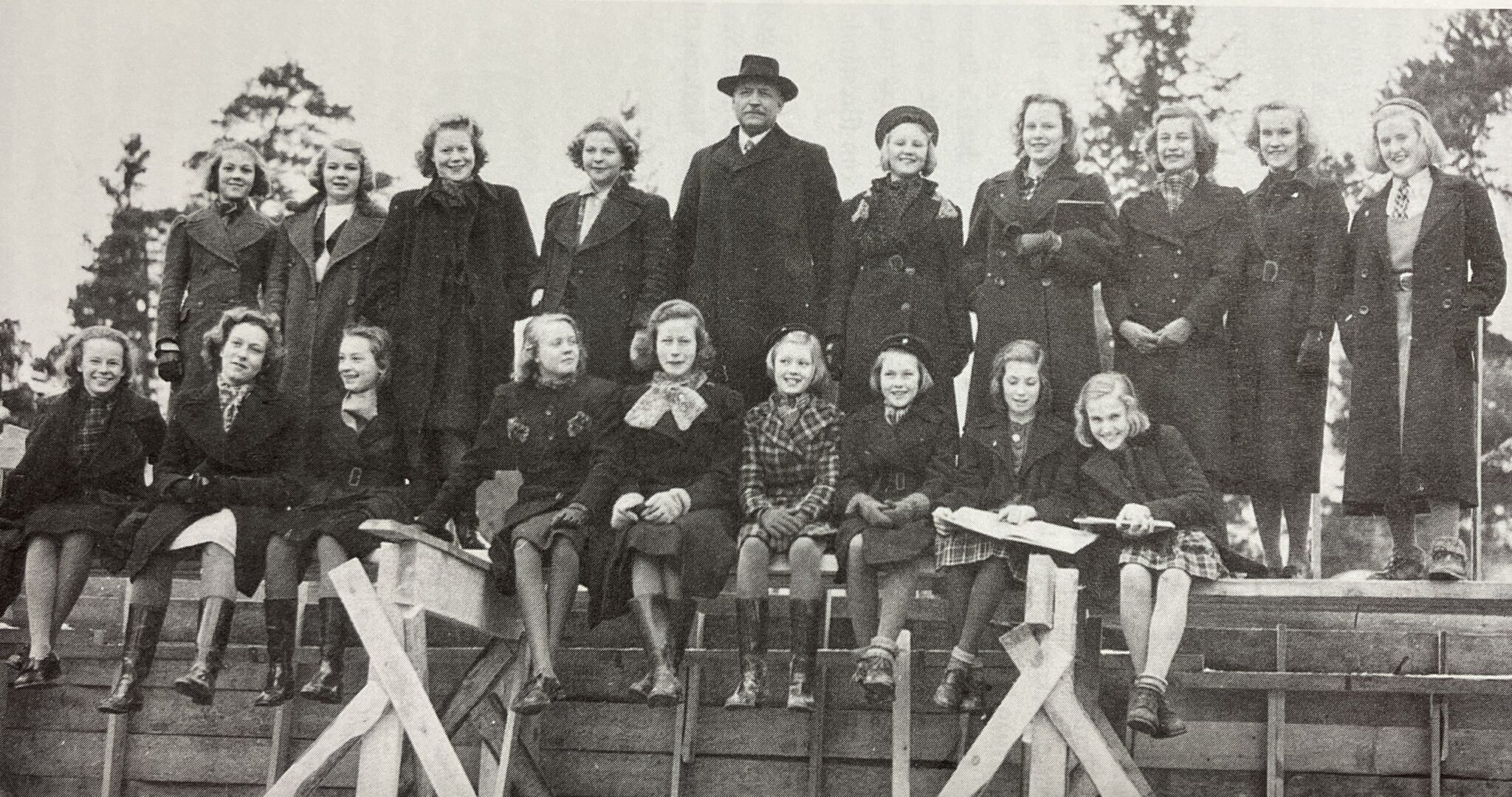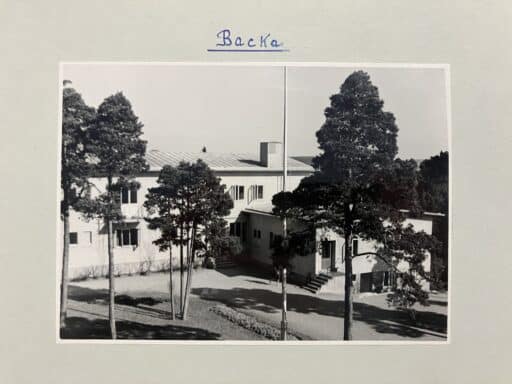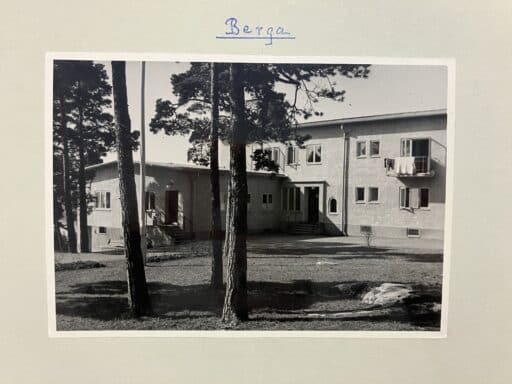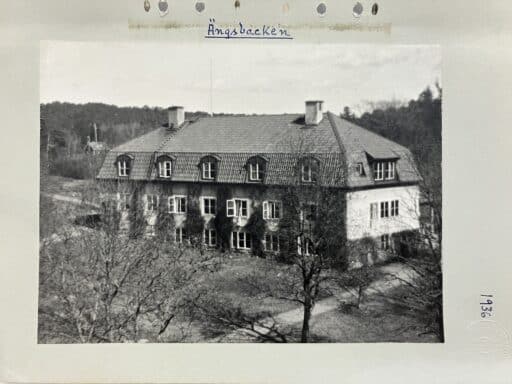Published 29 April 2025
The girls move in
Already in 1916, when Sigtunastiftelsen (the Sigtuna Foundation) was established, under the leadership of Manfred Björkquist, there was a vision: to launch a humanistic upper secondary school. From a modest start with 10 students in the autumn of 1926, the school, Sigtunastiftelsens Humanistiska Läroverk (SHL), soon developed into a thriving boarding school for secondary education.
In 1931 the vast school project was completed
The main school building of SHL was completed in 1931, high up on the pine-covered hill, surrounded by the boarding houses of Midgården and Kvarnbranten. Below the hill there was a third boarding house, Ängsbacken, which had been acquired from Lekmannaskolan and the fourth boarding house, Herrgården, was completed to accommodate the students in their final year before graduation.
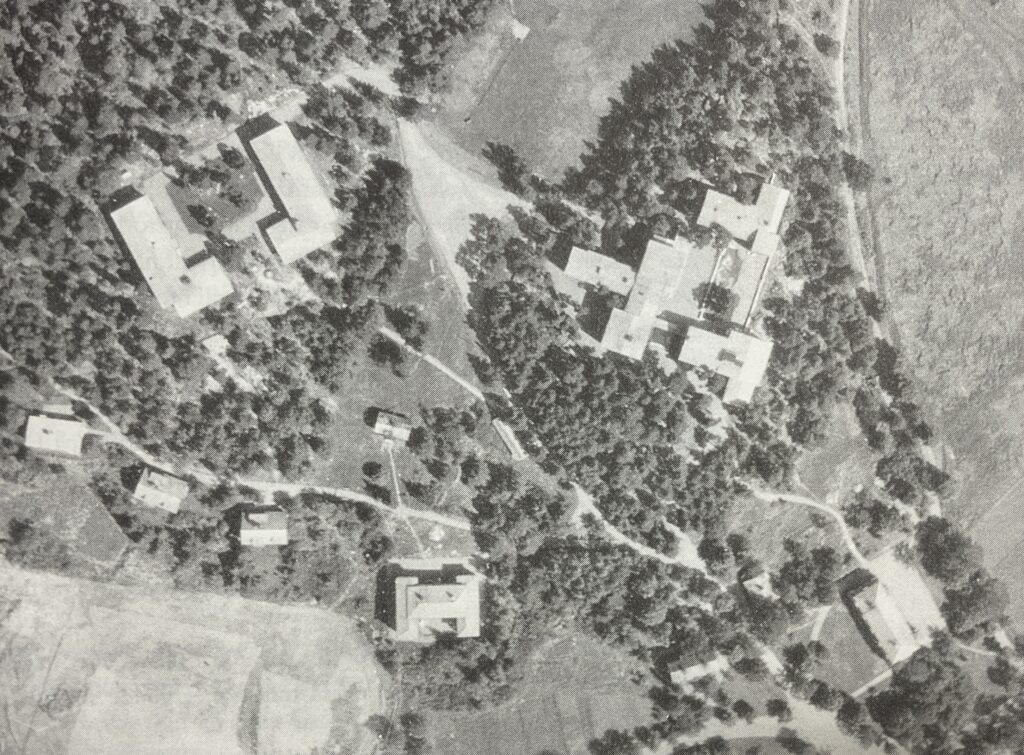
Aerial view of Sigtunastiftelsens Humanistiska Läroverk with Gymnasiebyggnaden, the upper secondary building, six boarding houses and teachers’ housing.
In 1931 Gymnastikhuset, the Sports and Gymnastics Hall, was also opened. It was a magnificent building, located south of the main road. Many years later it became the school’s assembly hall.
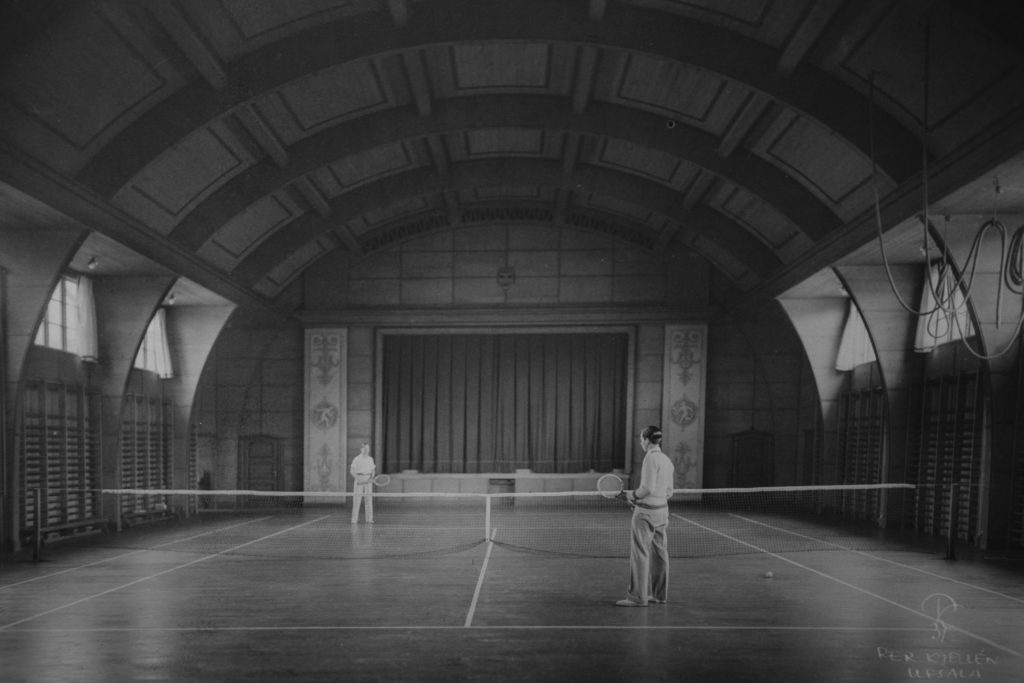
‘Gymnastikhuset’ on the Sigtunastiftelsens Humanistiska Läroverk campus was finished and opened in 1931.
During these first five years, from the opening of the school in 1926 until 1931, the number of students grew from 10 to 122. At that time, the four boarding houses were open only to boys. Four of the school’s students were girls, but they were all day students.
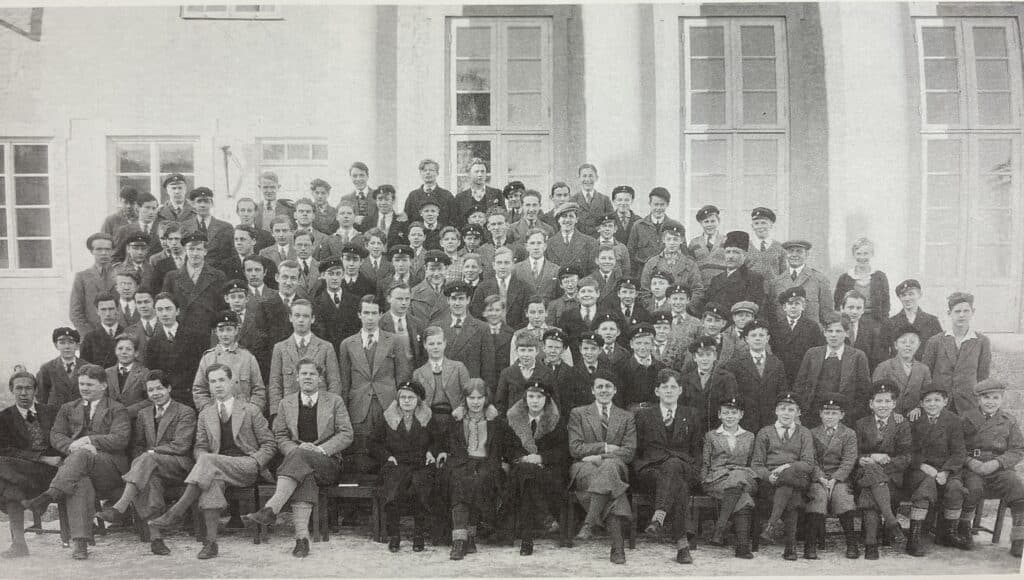
In 1931 some 100 students attended Sigtunastiftelsens Humanistiska Läroverk, here gathered on Midgårdstrappan.
The Principal Arvid Bruno recruited students as well as teachers and boarding house parents with great care. Most of the teachers who he hired were quite young. Together with their principal, they created the spirit of the school and left their mark on SHL during the 1930’s and for a long time to come. Most of them stayed for a very long time.
The school expands and the girls move in
After another five years, in 1937, a decision was taken to build two boarding houses for girls.
The planned location for the girls’ boarding school was the hill west of the main building. The chief architect of Sigtunastiftelsen, John Åkerlund, signed his drawings in 1938. They showed two plastered brick buildings with two floors, including temporary classrooms on the lower floors.
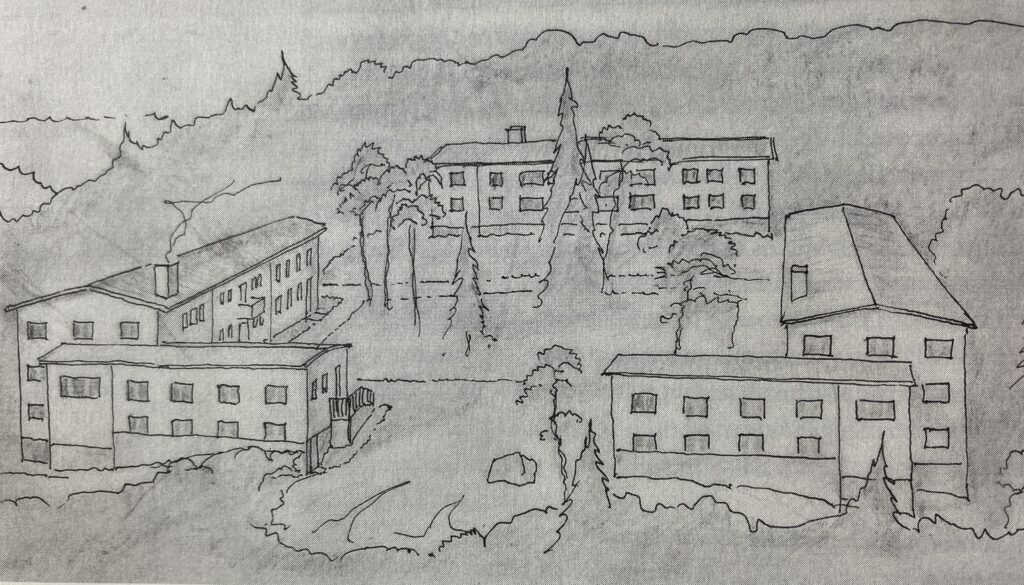
John Åkerlund’s first design proposal for the girls’ boarding school consisted of three boarding houses around a squared courtyard. However, the third girls’ house was given a different location and was later designed by John Åkerlund’s son, the architect Lars Åkerlund.
Already in 1938, Principal Bruno admitted the first ten girls, who stayed at Sandsborg’s guest house while the girls’ boarding school was completed. The first girls’ house, Berga, was opened in the autumn of 1939 and the second one, Backa, a year later in 1940. With Berga and Backa, the school now became a co-educational school – a boarding school for both girls and boys.
It was mainly thanks to Principal Arvid Bruno and Oscar Ekman, the school’s great benefactor and friend since the very start, that the girls’ boarding school became a reality. The management of Sigtuna Foundation had for some time nurtured the plans for a girls’ boarding school. There was a great need for it and in addition a mutual agreement that no other small town could match the cultural and spiritual environment found in Sigtuna.
By 1941, the school had grown and had 277 students, 178 boys and 99 girls. A total of 52 students were day students.
Source: “Vision och verklighet, a history of the school” (Henriksson/Askaner) and the Sigtunastiftelsen archive.
Below: Arvid Bruno (Principal at SHL 1926-1948) together with students at the building site of the school’s first girls’ house, Berga, in 1939.
